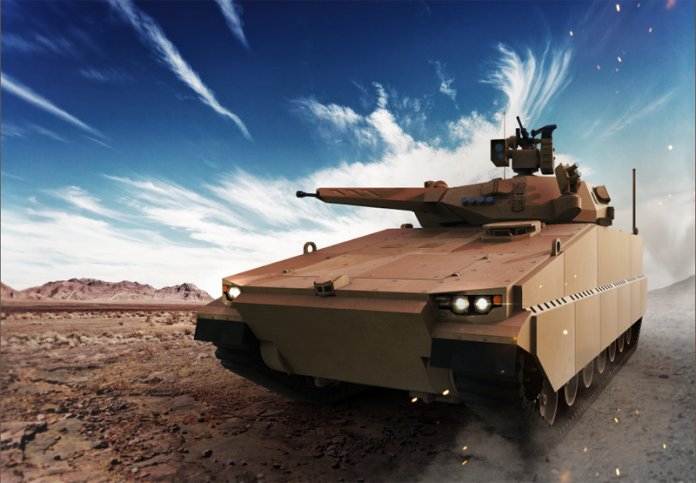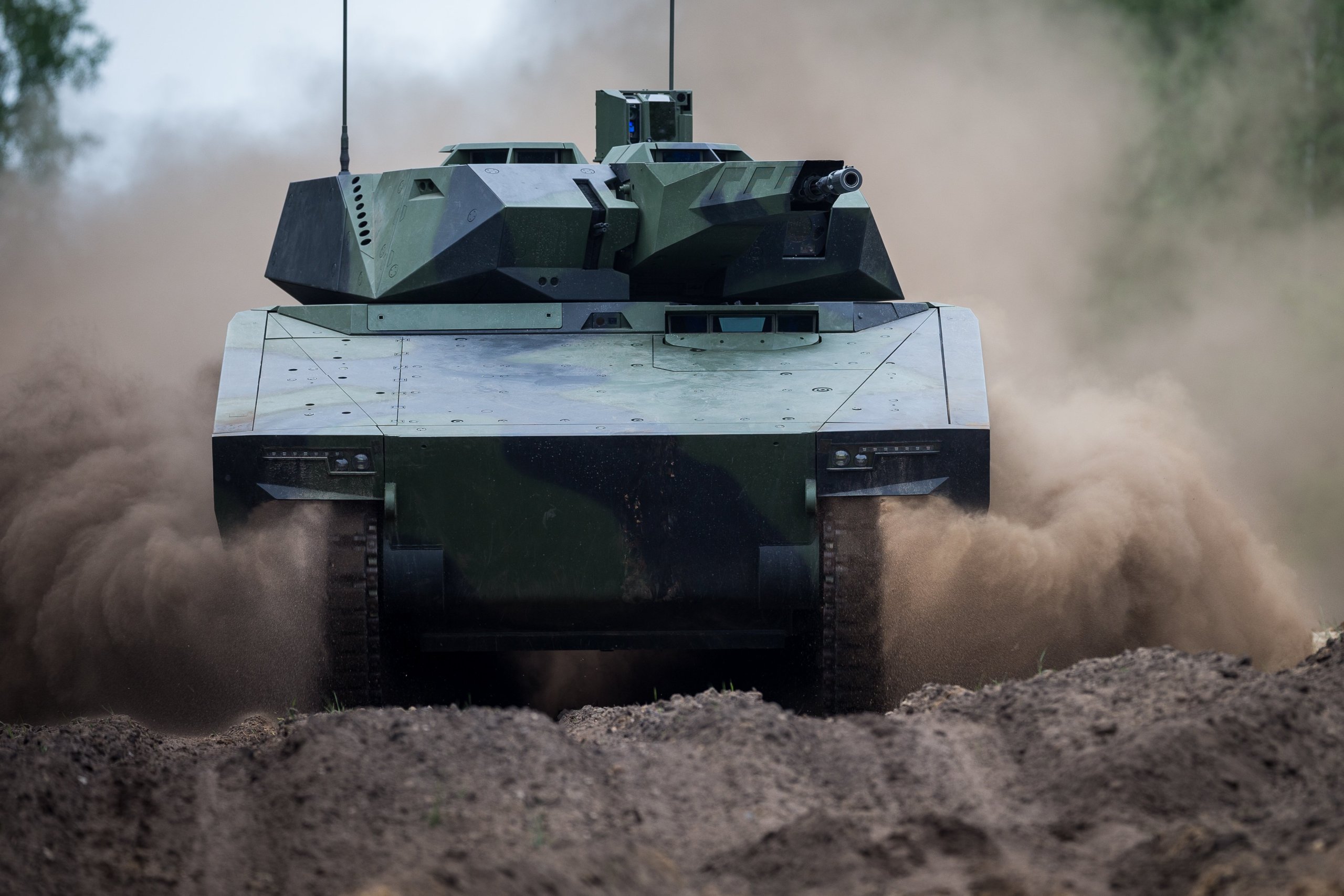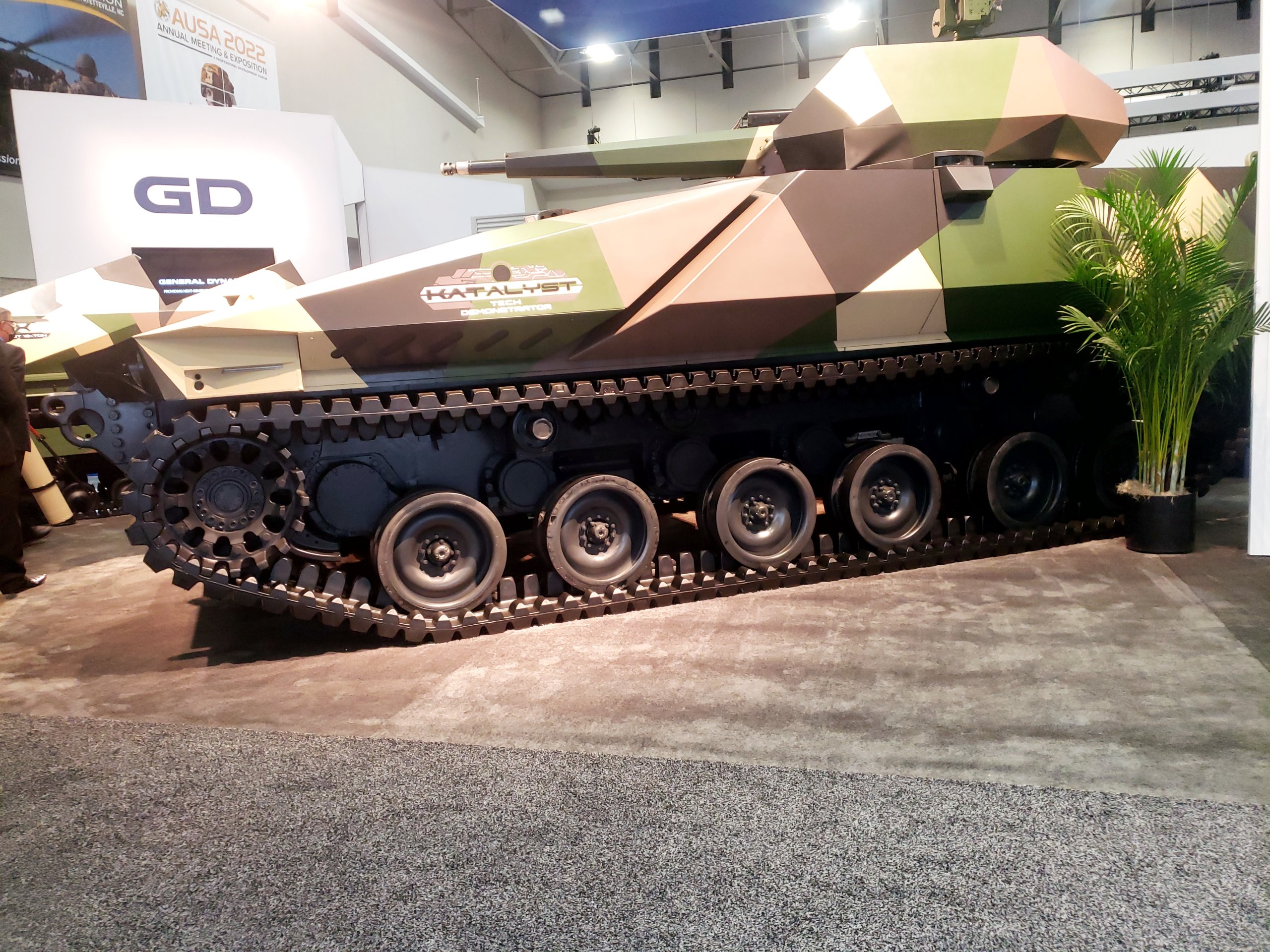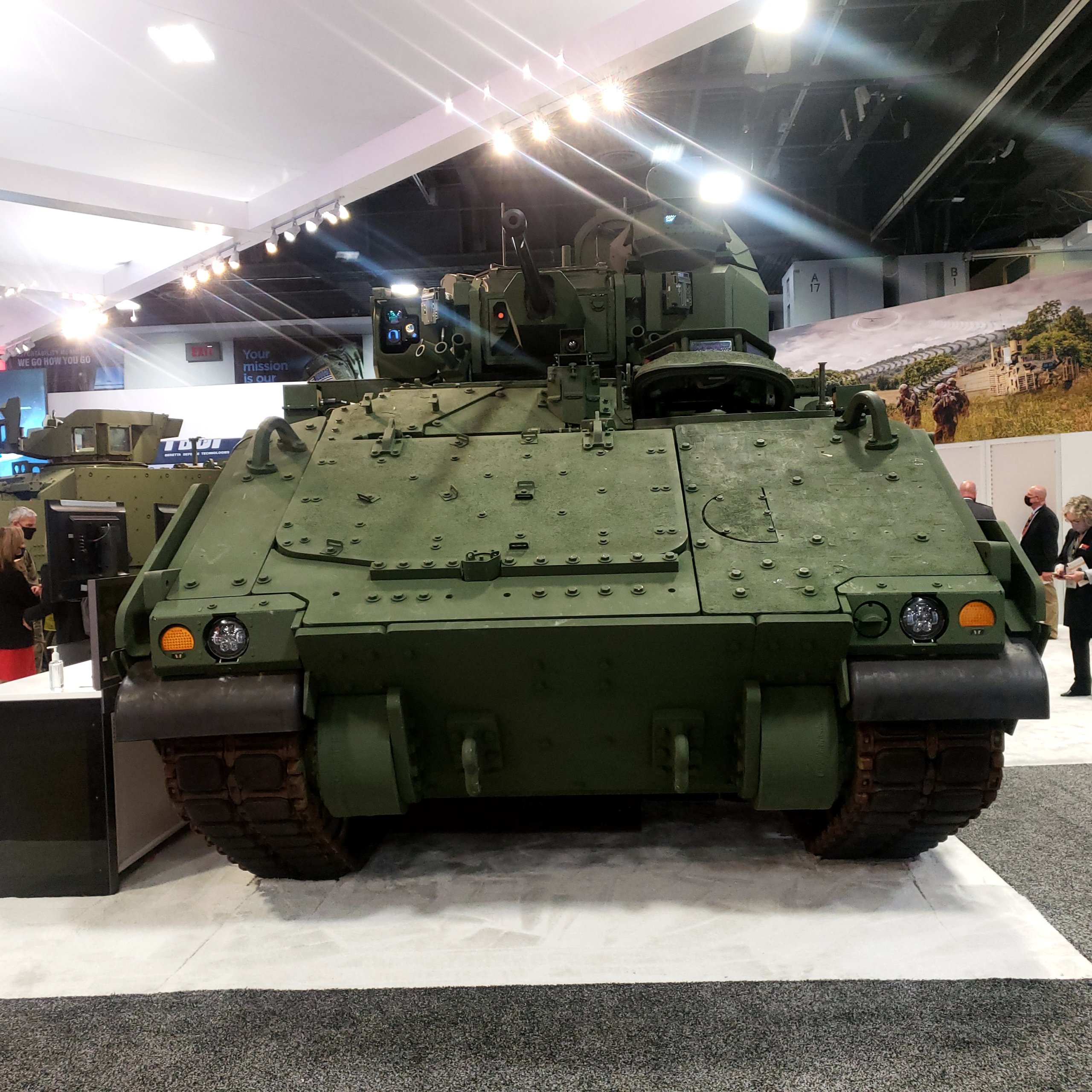
Replacing the M-2 Bradley Infantry Fighting Vehicle is one of the top priorities of the US Army modernisation programs.
First fielded in the1980s, the platform despite a number of improvement efforts may be hard pressed to accommodate the capabilities anticipated as essential in future ground combat operations. The Optionally Manned Fighting Vehicle (OMFV) programme is intended to provide a replacement system with the objective of equipping the first unit in 2028.
AUSA 21 offered the first public opportunity to view industries response to the latest revision of the OMFV acquisition approach which was initiated in the Spring of 2020.
MGen Ross Coffman, director NGCV Cross Functional Team, presenting at AUSA explained the programme’s intent to both provide industry maximum flexibility in its designs while also closely engaging with them throughout the process. This will be facilitated by use of digital engineering and successive in-design review and analysis including virtual evaluation. Its objective is to identify and respond to design elements and their impact early in the process. Coffman sees a key advantage in this approach is that it will allow for a dialogue between the Army and company teams during the design process as well as the possibility to introduce users feedback earlier in the process.
A recurrent theme in all Army programs going forward and particularly important in the NGCV is to move away from proprietary systems to open-architecture and “plug-and-play” that will allow inserting new capability and technology.

OMFV Status
After cancelling in January 2020, a previous Rapid Prototyping solicitation, the US Army revised it approach to a more open concept definition effort. These concept design contracts have been awarded in July 2021 to five industry teams.
These include General Dynamics Land Systems, BAE Systems, Rheinmetall America, Oshkosh Defense with Hanwha Defense (Republic of Korea, and Point-Blank Enterprises. Of note is the scope of varied experience and international participation in these teams. BAE is working with Israel’s Elbit Systems. Rheinmetall, a German firm, in linked with L3 Harris, Raytheon, Textron, and Allison Transmission. Oshkosh Defense is aligned with Korea’s Hanwha Defense, Pratt and Miller, plus Israel’s Rafael and Plasan. Unlike the others Point Blank is not a traditional vehicle supplier but has teamed with Keshik Mobile Power Systems and other firms.

This phase will be followed by a second full and open competition request for proposal in 2022 requiring a “detailed digital design” from up to three firms which may lead to delivery of test prototypes. Down select to a single vendor is projected in 2027. Although a full-rate production decision is not planned until 2029 the Army has indicated initial fielding would occur in 2028.
OMFV was, as expected, well featured in the industry presence on the AUSA exhibit hall with presentations by BAE and General Dynamics Land Systems dominated by representative combat vehicles.

However, company representatives repeated stressed that did these we not their OMFV candidate designs. Rather they were test beds intended to allow for the evaluation of various technologies, components and design details. This suggests a level of uncertainty that my exist at this early stage as to the Army’s preferred direction. Perhaps this is not surprising given the open give-and-take dialogue approach the Army has proposed.
Still, it is increasingly evident that a next generation combat vehicle may, in fact, physically look very much like current vehicles. The majority and most significant new capabilities will be largely internal and essentially invisible. Although new weapons, sights, power and survivability enhancements may be introduced these may not be what offers the most significant battlefield capabilities. These rather come from the ability for sharing and integrating data not just within the NGCV platform but networked across the full range of battlefield systems.
by Stephen W. Miller












